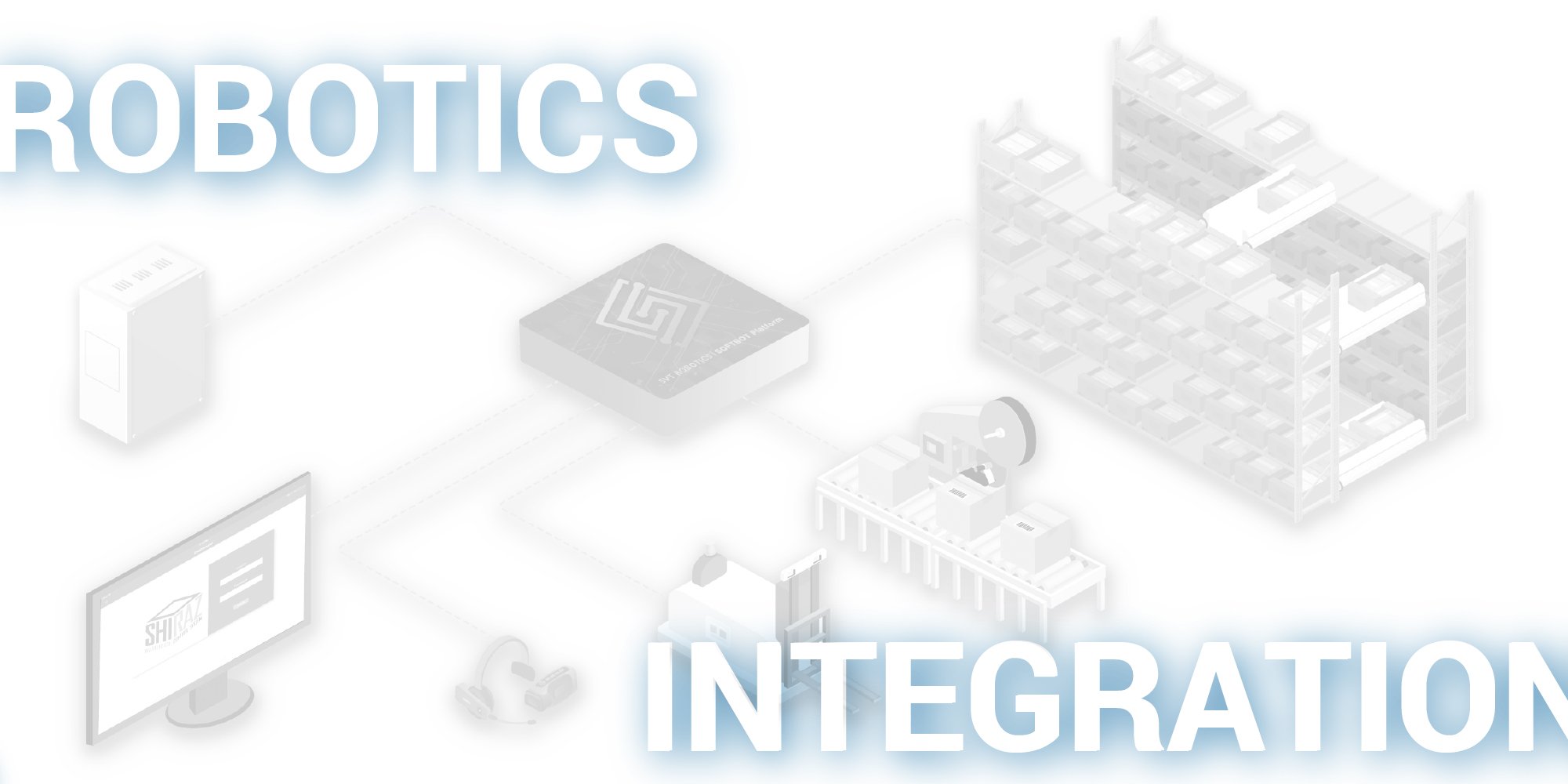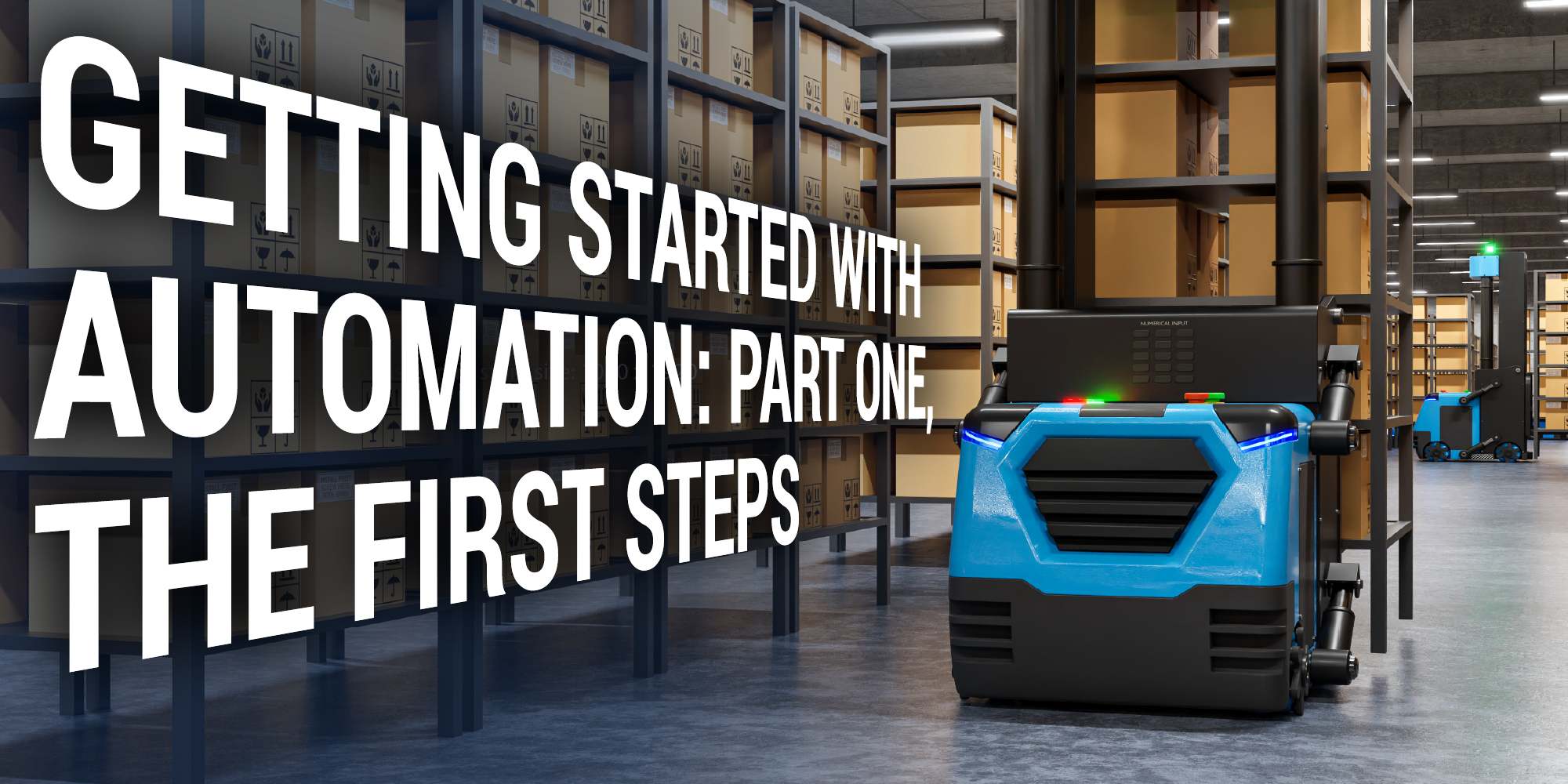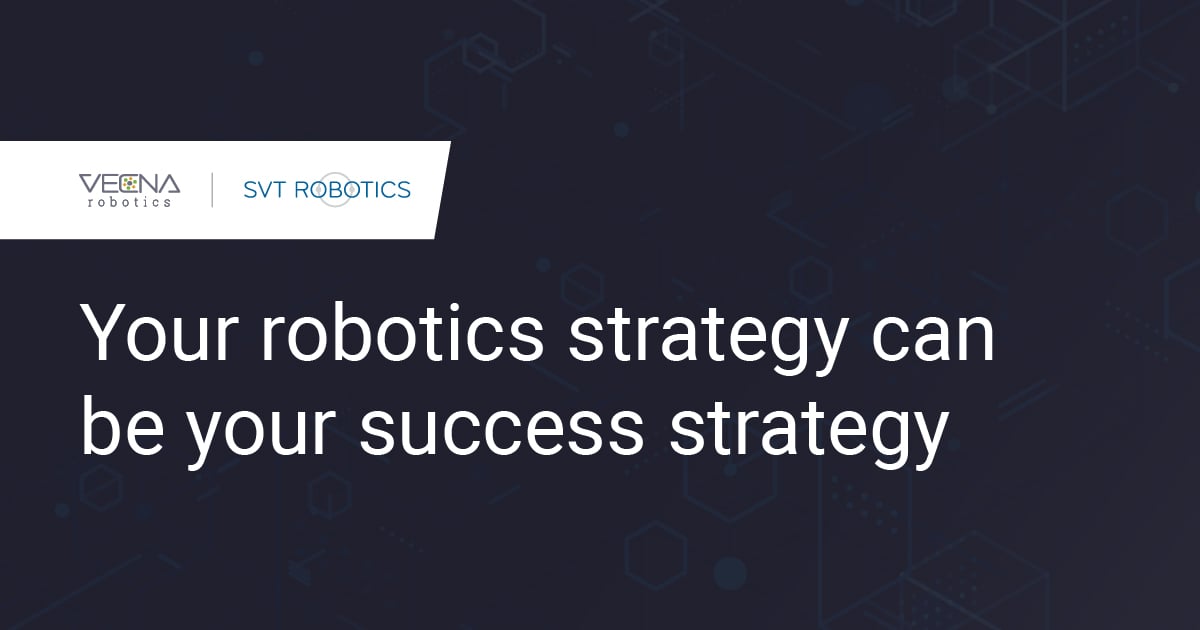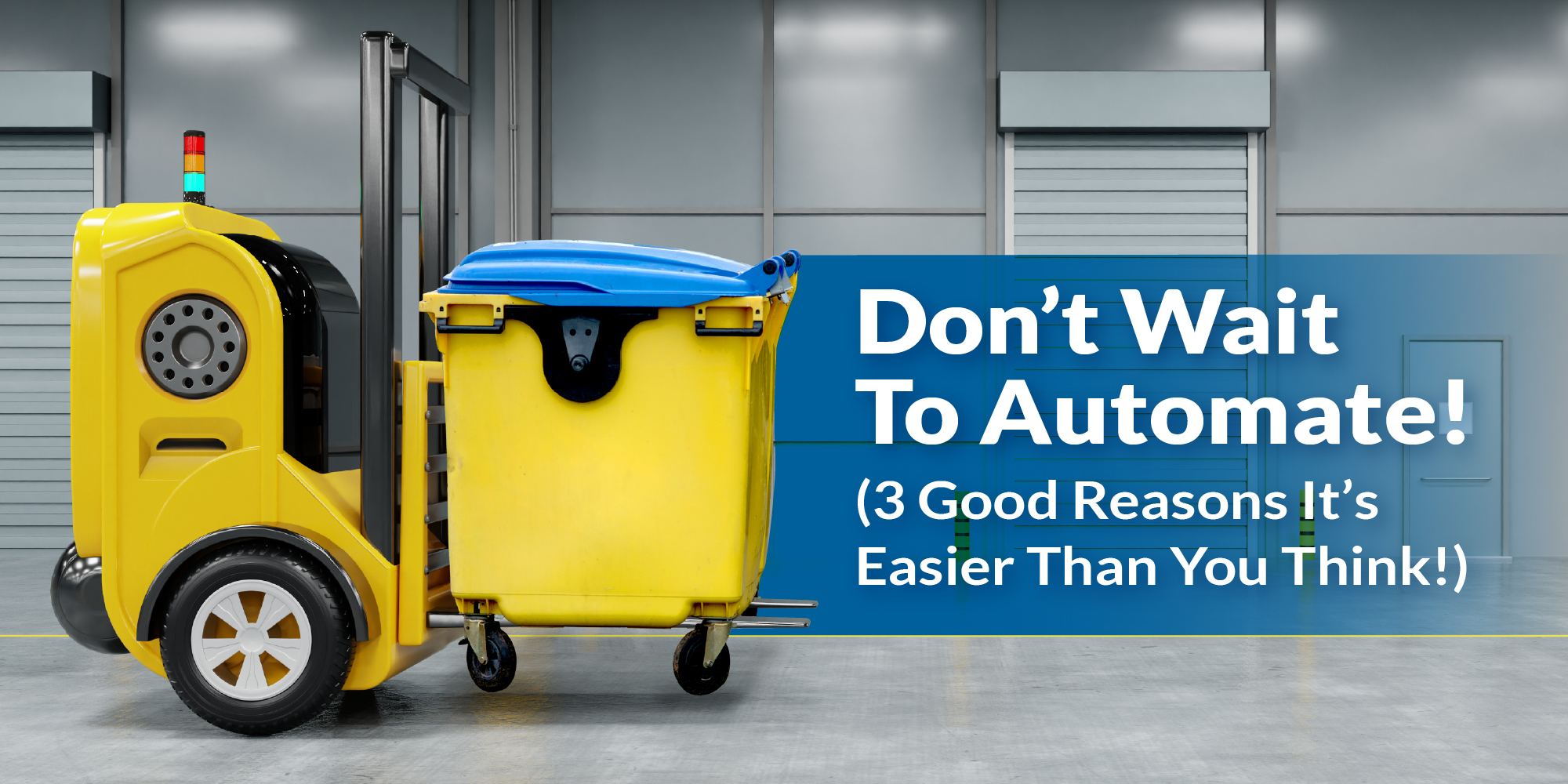Every robotics solution has enormous potential to help in any given industry. Today, more companies are turning to automation to benefit from the consistent and fast performance that can maximize entire supply chains.
But there are considerations—robots must be integrated into an existing environment and enterprise system, and likely with other automation technologies. In fact, analysts from Gartner® identified “10 dimensions that represent the various characteristics and processes across type, size, and focus of individual or groups of warehouses”1 that make it imperative to evaluate complexities at every warehouse level prior to adding automation.
Before now, integrating new automation with your WMS and other technologies required a massive infrastructure investment and large-scale custom integrations to make it work. But there are several compelling opportunities to help you avoid that time and cost and put your company in a position to completely rethink how you test, integrate, and deploy robotics.
Choosing Your Automation.
When purchasing robotics, it's not realistic for most companies to replace their existing technology wholesale. Ideally, your new automation will work alongside and enhance existing equipment, such as conveyors or AMRs already navigating fixed routes. Achieving system interoperability requires a perspective that understands what exists, what's new, and how to make everything function together in a way that strengthens the supply chain overall.
In the past, that process has often landed with operations or IT after a problem is uncovered. For example, a sales team that made an overreaching promise on technological capabilities. It's not about ill intent, just unfamiliarity regarding operational details at the buying level. That can involve physical issues—an AMR that makes a parabolic turn instead of a 90-degree turn, which may not work in some warehouse setups—all the way to WiFi protocols that allow robots to communicate with one another—some may use 802.11g and others 802.11b, for example. If no one asks the question in advance, it will become a problem recognized by the software engineer responsible for developing the robot's workflow after already spending a lot of money and months.
So, the first essential step in finding your best solution is to involve your operations and IT teams in the process. They’re responsible for integrating new technology and ensuring the workflows are possible, which means they'll ask good questions upfront to prevent unexpected problematic surprises down the road. You'll need active support from all or at least most of these stakeholders before you start, or at least no vetoes that could hamper your efforts.
The next step is to pilot your chosen solution; set it up in your environment to see if it can be integrated with your enterprise system and easily scaled if needed. Fortunately, robotics technologies and solution-agnostic integration platforms have evolved to the point that companies can deploy different types of automation to create novel solutions that better use a company's budget and existing technologies. You no longer must choose either solution A, B, or C; in many cases you can pilot solution A with the navigation sensors on solution B combined with AGV hardware you already have on hand. There's a false belief that this can cost hundreds of thousands of dollars and take months of time, and I'll address why that's no longer the case in the next section.
Lastly, "choosing" the best solution doesn't necessarily mean you have to buy it. Many robot manufacturers now offer RaaS (Robotics as a Service), where you lease their automation as you need it, whether that’s monthly or on a per unit picked. That makes it easy to swap and upgrade when better technology comes along. RaaS makes it possible to plan based on the latest technology rather than concern for assets on your balance sheet. It's all immensely exciting and evolving the possibilities of how automation is viewed and used.
Plus, being able to pilot different solutions quickly and easily enables the best way I know to realize holistic success while avoiding as many pitfalls as possible: fail. And fast.
Fail Quickly. Succeed Faster.
Failing quickly as a business practice isn't unique to automation, yet it's uniquely valuable to the industry. Not that robotics companies, software engineers, or those making purchasing decisions want a technology to fail, it's just much better to quickly recognize when a solution isn't the right fit before spending too much time or money.
Both automation technology companies and end users have a limited field of view—the tech and tasks they solve vs. throughput and efficiency outcomes—which helps explain why they don't always link up smoothly. A more macro view of someone who fully understands the demands on both ends of the industry can focus on connecting them quickly and correctly. That’s finally happening with multirobot orchestration technology designed to help companies rapidly deploy fully integrated solutions that work in concert with each other.
The key to such solution-agnostic integration platforms is their focus on seamless interoperability by removing custom code. Such a platform is designed to work with enterprise-level systems and individual automation technologies through a macro view. For example, the solution-agnostic provider assumes the interoperability challenge of technologies, such as AMRs with WMS. That means that once those technologies are connected to the platform, end users can simply select the robot from a "store" and then integrate it with their enterprise system in only days or weeks—all without tasking software engineers with extensive code development.
Advancements like this are radically reducing the time spent and financial risk to pilot and scale robotics. It can mean investing $50,000 versus $50 million in a solution to ascertain the direction of your company’s warehouse automation efforts. If the technology fails, you can abandon it without much investment. If it works, you can scale without the worry of unexpected integration issues. For too long, failing fast in robotics may have also meant a decision-maker losing their job. Now, it can be a tool to ensure the right automation is put into place.
Ramp Up to Value.
There’s no perfect technology for your entire business, which is why the best approach is to pilot and test as many technologies as you can before scaling up. With modularity and point solutions, you can assess multiple technologies against your business objective, which is much more budget friendly. From Gartner®, “Companies might find some very simple use cases that address low-hanging fruit, such as simple product transport that can be up and operational quickly. Meanwhile, they can experiment with other use cases, such as collaborative pick to cart, which might require a bit more time and effort.”2 That test-then-scale approach also allows more flexibility, because as fast as consumer demand and supply chain gaps fluctuate, your business needs may change even while you're implementing robotics.
Additionally, scaling is not risky when you know the pilot program results can be done at a fleet level. For example, a company can explore the implementation of a new robotic picking arm and decide if it’s appropriate to scale to a hundred more within weeks. Without a solution-agnostic integration platform, there would always be a concern with the pilot solution's ability to run with other robotics or software and ramp-up to many times the scale of your pilot. The remedy before would've likely been more coding and fixes for the operations team. Now, there's no need for that worry or cost.
Finally, there's the issue of purchasing robotics. As I stated before, RaaS options offer the financial benefit of requiring less investment up front, but the most significant advantage comes when combining it with solution-agnostic integration platforms and pilot programs. By leasing, you have more flexibility to switch between robotics solutions or add additional ones to your supply chain; it’s possible to quickly and easily run pilot programs to test one or several technologies.
The bottom line is that companies can now test for the best solution, not just one particular solution. The benefit isn't just the safety of failing quickly; it's trying out multiple technologies at a much lower cost, knowing with certainty whether they'll work and scaling at the speed of your business need. Instead of making a significant bet hoping a given robotics technology will work for you, you can now make several smaller micro bets that improve your chances of hitting the jackpot while greatly reducing the risk and frustration that used to be commonplace.
Robotics integration—which used to be the very challenging side of automation—is turning out to be very, very good for quick testing, rapid scaling, and sustained long-term success.
1. “Use Gartner’s Model to Understand the 10 Dimensions of Warehouse Complexity Before Evaluating WMS Solutions” by
Simon Tunstall, Dwight Klappich, published July 26, 2021.
2. Gartner “Are Robots the Answer to Pandemic-Proofing Warehouse and Logistics Operations?” by Dwight Klappich, John
Johnson, published July 9, 2020.






